It's been a long, hard battle for gay athletes in professional sports. There have been years of constant progress when it comes to gay rights issues and representation in wider society, but it has sometimes felt like sport has been slow to catch up. Even now, gay people seem under-represented.
There are signs of progress in more recent years, though. It used to be the case that gay people waited until they'd retired from sport to come out as gay. They feared the reaction they'd get from press and fans and didn't want their sexuality to distract from their careers.
Nowadays, we're slowly seeing more professional athletes feeling comfortable enough to publicly live as they really are while they're still playing. Hopefully, they'll inspire others to come out, too. From Billie Jean King's announcement in back in 1981 through to the present day, here are fifty proudly gay professional sportspeople.
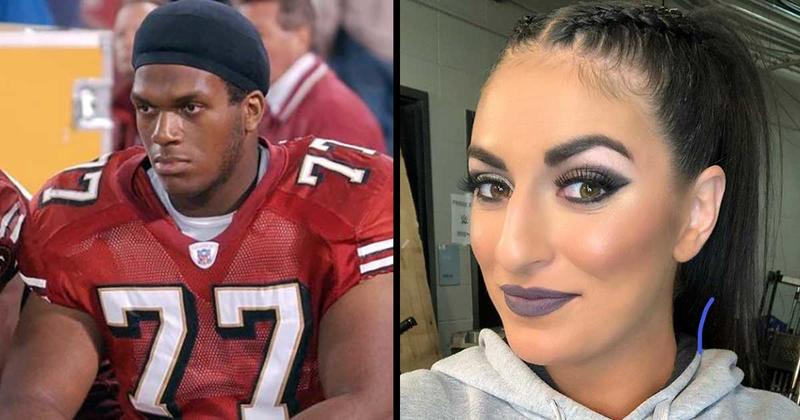
The British-American skier Gus Kenworthy was a delight to watch during the 2014 Winter Olympics in Sochi. While he came to Russia to compete in his chosen sport, he also met and fell in love with some puppies, adopting them and taking them home.

He waited until after the Olympics were over before deciding to come out; possibly because he was wary of declaring that he was gay before going to Russia, where gay rights and equality issues haven't progressed as far as they have in the Western world. Taking the very modern route to coming out, Kenworthy took to Twitter and Tweeted out a very simple three-word declaration: "I am gay." Although social media can be a hateful place at times, the reaction to his announcement was positive and supportive. He's now in a relationship with the actor Matthew Wilkas.
Former Olympic diver Greg Louganis has been living as an openly gay man for over twenty years now. The Californian's route to coming out wasn't the happiest story; he was in what he describes as an abusive relationship with his former manager Jim Babbitt for most of the 1980s, and contracted AIDS from him in 1988. Fearing the worst, he held a 'goodbye' party for friends and family in 1993. His health was failing, and he didn't expect to live another year.
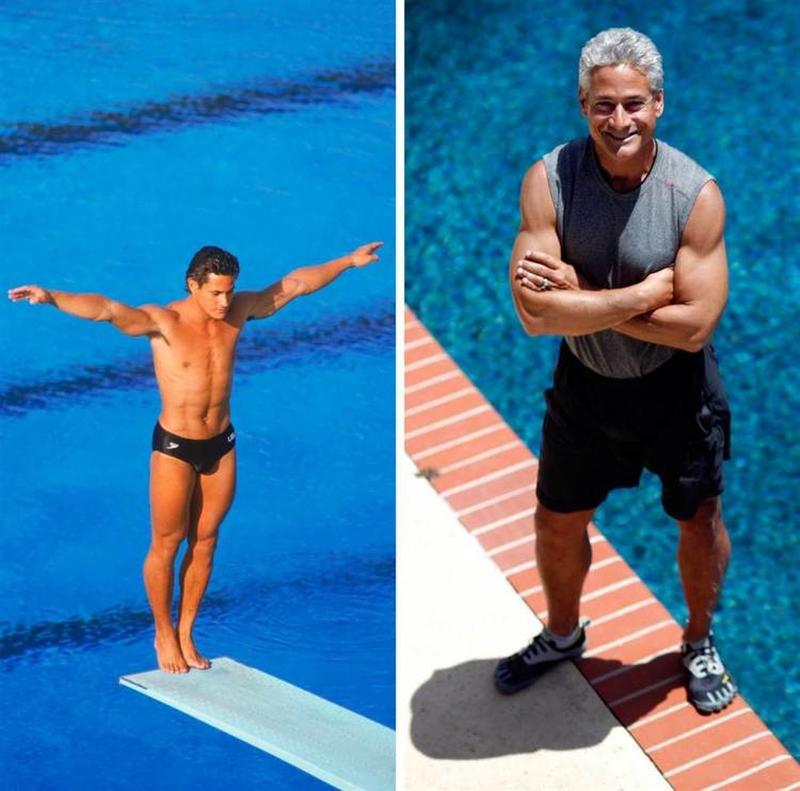
Happily, he did, and was around to publicly come out to the world at the Gay Games in 1994. Thanks to new treatments his health improved, and Louganis is still with us today. He's still active in diving, having mentored the US Diving teams at both of the last two Olympics, and has been married to his paralegal husband Johnny Chaillot since 2013.
Billie Jean King has been an inspiration for gay people, and especially gay women, in sport for well over thirty years. In a time where gay people were still subject to horrific discrimination, tennis legend King had the confidence to declare that she was gay all the way back in 1981. She was the first significant female athlete in any sport to declare herself as a lesbian.

Her hand was forced with the declaration due to a palimony lawsuit filed by her former secretary Marilyn Barnett, who she'd been having an affair with since the 1960s. Coming out cost her over $2m in sponsorship revenue as partners pulled out, but she continued playing in defiance, going on to become the oldest player ever to win the Edgbaston Cup in 1983. Today, she's recognized as one of the greatest tennis players of all time and remains an activist for both women's and gay rights.
Former WNBA player (and current coach) Sheryl Swoopes has had a complicated relationship with her sexuality over the years. During the mid to late 90s she was married to her male high school sweetheart, going on to have a son with him. By 2005, right in the middle of her playing career, she realized she was a lesbian and came out as such. At the time, she said "I can't help who I fall in love with, nobody can."

By 2011 she was engaged to a male friend and went on to marry him in 2017 after a long engagement. Quizzed about her past as a lesbian, she went on record as saying that being gay was 'a choice,' which was a reversal of her previous stance. The later comments weren't helpful to the gay community, and Swoopes has apparently never heard of the idea that bisexuals exist!
We've already covered that Olympic skier Gus Kenworthy opted not to come out as gay until after the 2014 Winter Olympics in Russia, partly motivated by a desire to avoid the kind of issues that being gay in Russia can cause. Former Olympic figure skater Brian Boitano took a different approach. When he was appointed to the coaching team for the US skating team for that Olympics, he came out as gay before the trip as a show of solidarity with his fellow gay athletes.

A double world-champion and an Olympic gold medal winner, Boitano had done it all within the world of skating during the 1980s. He was in his 50s by the time of the Russian games and had never declared his sexuality but felt motivated to when the Russians passed discriminatory laws against the LGBT community in 2013. It's never too late to inspire others.
Billie Jean King didn't have long to wait after becoming the first publicly lesbian sports professional in 1981. A few months later, her long-time rival on the court Martina Navratilova was outed by an article in the US press. She made the disclosure in an interview but asked the New York Daily News not to publish it until she'd made a statement about her sexuality herself. The paper published the interview anyway and left Navratilova playing catch-up with the publicity.

At the time, Navratilova considered herself to be bisexual, but later revised the statement to confirm she was only interested in women. As with King, it didn't affect her performances on the court at all, and she went on to win major championships for more than a decade. Some journalists even consider her to be a superior player to King.
American Olympic figure skater Johnny Weir was once determined never to discuss his private life or sexuality in the press. There was plenty of speculation about his orientation, but he didn't wish to dignify it with a response. It was reading the stories of others that changed his mind; he realized that he could use his profile to help others to become comfortable with who they were.

Reading a story about the suicide of a teenage boy who couldn't come out of the closet was the final straw for Weir. He came out in 2011 and said he was doing so in the hope that it would bring strength to just one person. He retired from the sport after a hip injury in 2013, but has since gone into fashion design, although he still commentates on skating for television on occasion.
For some reason, it was easier for skaters, skiers and tennis players to come out as gay than people who play 'macho' sports like football. That was until Michael Sam summed up the courage to become the first ever openly gay NFL player in 2014. Sam was especially bold; he came out before the draft, and there were fears that his declaration would put teams off the idea of drafting him. Fortunately, the Rams were there to step in and pick him up.

Sam's story made history and was such a big deal at the time that then-President Barack Obama took the step of publicly congratulating him for his courage. He would then go on to become the first openly gay player in the CFL when he signed for the Montreal Alouettes but retired from the sport shortly after due to mental health issues. He now works as an author and a motivational speaker.
Boxer Emile Griffith isn't a name that's widely known these days - even to hardcore boxing fans - and that's because he was light years ahead of his time. Griffith was in the ring from 1958 through to 1977 and was a world welterweight and middleweight champion in his prime. He was also a bisexual, although he didn't agree with that term.
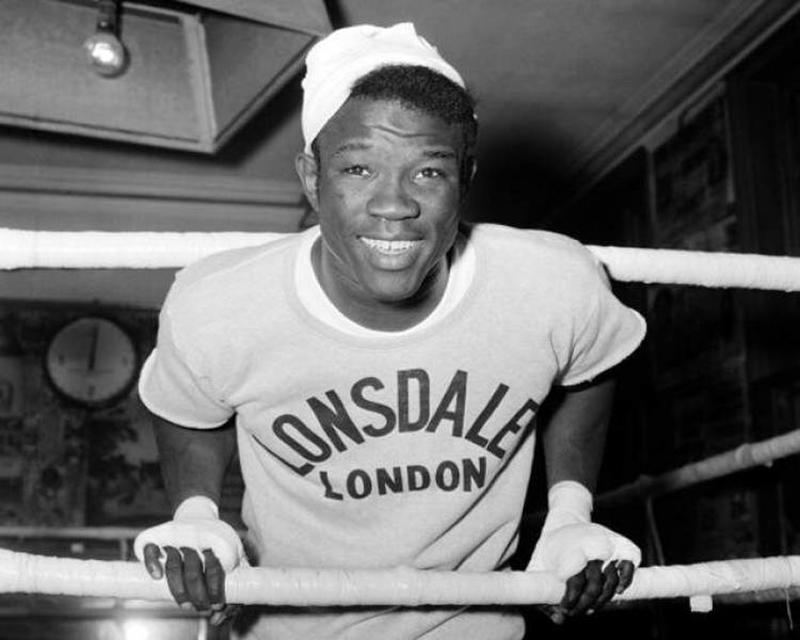
Griffith once told Sports Illustrated that he hated the fact that people put labels on sexuality, saying, "I don't know what I am. I love men and women the same." His life's biggest controversy came when he fought Benny Paret in 1962. Paret used a homophobic slur towards Griffith before the fight and touched his buttocks. An incensed Griffith had to be held back from attacking his opponent. During the fight, he knocked Paret out hard. Paret died ten days later in hospital without ever regaining consciousness.
There's frequent debate about whether people or born gay, or whether it's a learned behavior from someone's experience growing up. Former US distance swimmer Diana Nyad has an input on that debate; she's in favor of the 'born gay' theory. In her own words, she says "I think I was gay from day one."
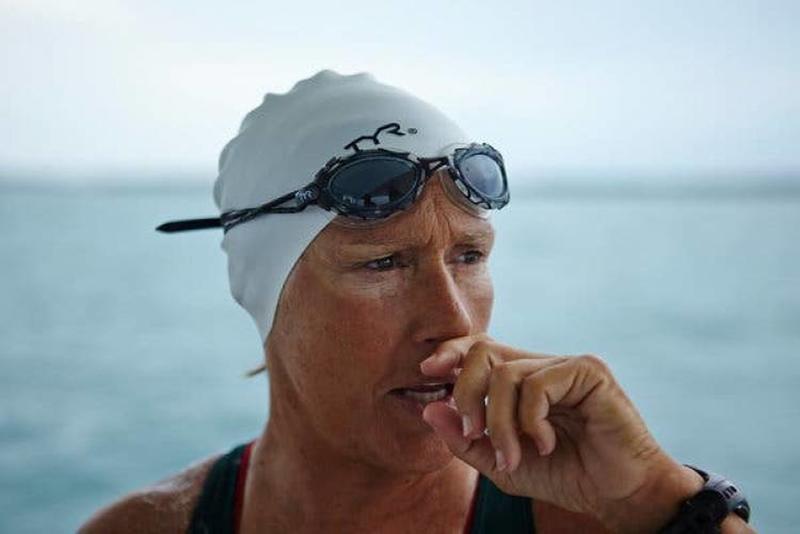
Nyad, a perpetually inspiring figure, has never truly retired from swimming. She's in her mid-70s now, and most of her world records and career-best achievements happened during the 1970s, but she's still created history within the last decade. In 2013 she became the first person to swim all the way from Cuba to Florida without the use of a shark cage; a distance of 100 miles. If she wasn't a swimmer she could have become a professional squash player; she once ranked 13th for women in the USA.
What Michael Sam did in football, Jason Collins did in basketball. Collins was the first man to come out as gay during his active career in any of the major US men's sports. He was playing for the Boston Celtics in 2013 when he chose to speak to Sports Illustrated magazine and reveal his sexuality, but he'd been quietly supporting the LGBT community for years; his choice of the number 98 for his jersey was a reference to the homophobic murder of Matthew Shepard in 1998.
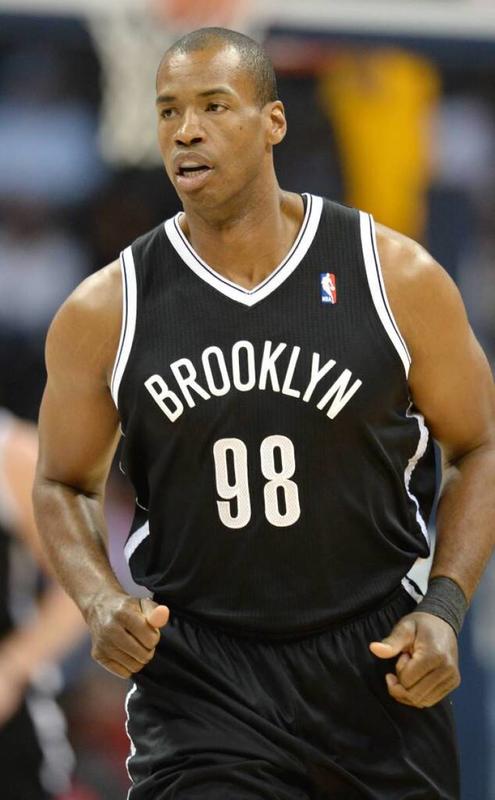
Collins' career didn't last long after his announcement; he played on for only one more year, although he was 36 at the time and age may have been a factor. When he signed on with the Brooklyn Nets in 2014 to play his final season, his replica jersey became the top-selling item in the whole NBA online store, which was a fantastic tribute to his bravery.
Women's US soccer legend Abby Wambach is openly gay, but rather than worrying about how or when to come out of the closet, she's so confident in herself and her lifestyle that she never felt a need to. As Wambach has stated before, if straight people are never required to come out as straight, why do gay people have to make a grand declaration of their status? She says "Gone are the days you need to come out of a closet. I never felt like I was in one."
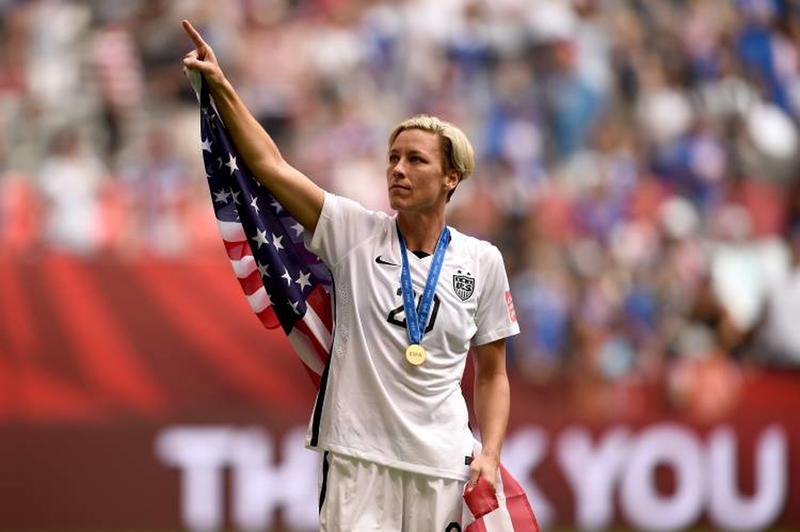
Wambach represented her country with distinction from 2001 all the way through until 2015, pulling on the national jersey 256 times, and scoring 184 goals. She released an autobiography called 'Forward' after her retirement in 2016, which went on to top best-seller lists. She's now married to author Glennon Doyle Melton.
Wade Davis is another NFL player who's come out as gay, but he didn't feel able to do so until years after his career was over. In truth, as a player he was better known to fans of NFL Europe than he was the full NFL; he was in the off-season squads of the Seattle Seahawks, Tennessee Titans, and Washington Redskins, but he only ever got game time for the Berlin Thunder and the Barcelona Dragons. A knee injury ended his playing career in 2003.

Realizing that he could make a difference as both a sportsman and a person of color in coming out, he announced himself in 2012 and has since then devoted his time to LGBT causes, including appearances as a public speaker as well as a writer and educator. He and writer Darnell L. Moore founded the '#thisisluv campaign to highlight LGBT causes within the black community.
We're returning to tennis now for another woman who made history, although she took a different route to it than Martina Navratilova or Billie Jean King. She was born as 'Richard Richards' (for which I'm sure she thanked her parents) in 1934, but always struggled with her gender identity. After living - and marrying - as a man, she opted to have gender reassignment surgery. After that, in her early 40s, she entered professional tennis as a woman.
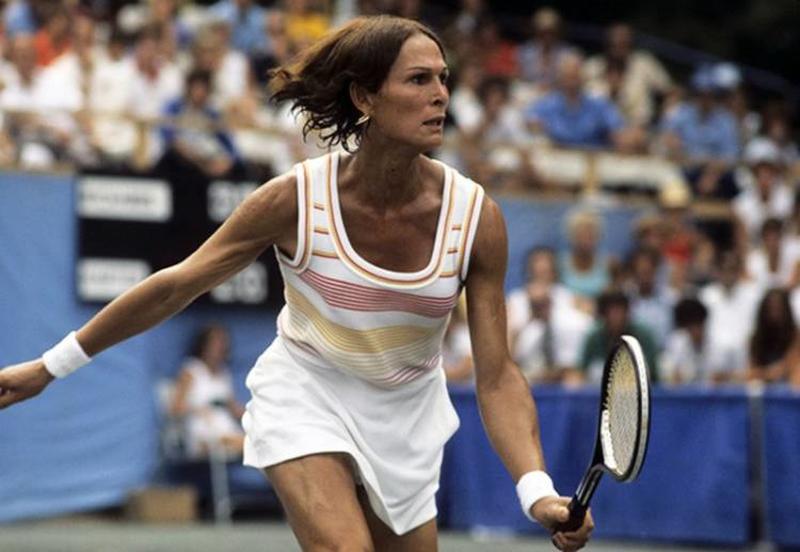
Unsurprisingly given the time she lived in, this prompted controversy. She had to take the organizers of the US Open to court in order to gain entry to the tournament, which she entered in 1977 and then appeared in each year for the next four years, albeit never progressing past the third round. She went on to serve as a coach for Navratilova, helping to shape her into arguably the best female tennis player of all time.
Jason Collins was the first NBA player to come out as gay while still playing. John Amaechi was the first NBA player to come out as gay in history. His career had been over for some time when he released his tell-all memoir 'Man in The Middle' in 2007; his final NBA season was with Utah Jazz in 2003.
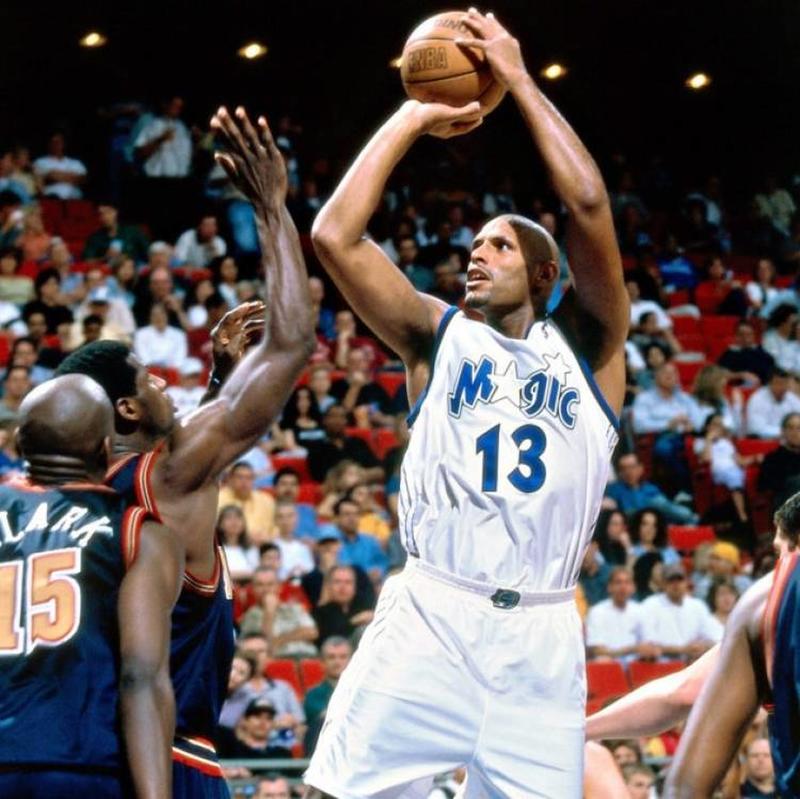
The reaction to the British-American's revealing statement was mixed. Wider society was supportive, and heralded him for his courage, but there were those within the sport who had a less-than-positive response. Fellow former player Tom Hardaway said that he'd never want a gay man on his team or in his locker room, although he later apologized for his comments. Bigger names like Charles Barkley were more supportive, saying that he was aware that he'd had gay teammates in the past and also that he'd played against gay players, but none of them had been brave enough to make the matter public.
During her career, Chris Witty was a sportswoman of high achievement. She's one of the very few people who've represented the United States at the Olympic Games in two completely separate sports, both as a racing cyclist and a speed skater. Speed skating was her first love though, and it's the sport she's most closely associated with. She retired from both sports in 2002 but had the honor of carrying the US flag at the 2006 Winter Olympics in Turin.
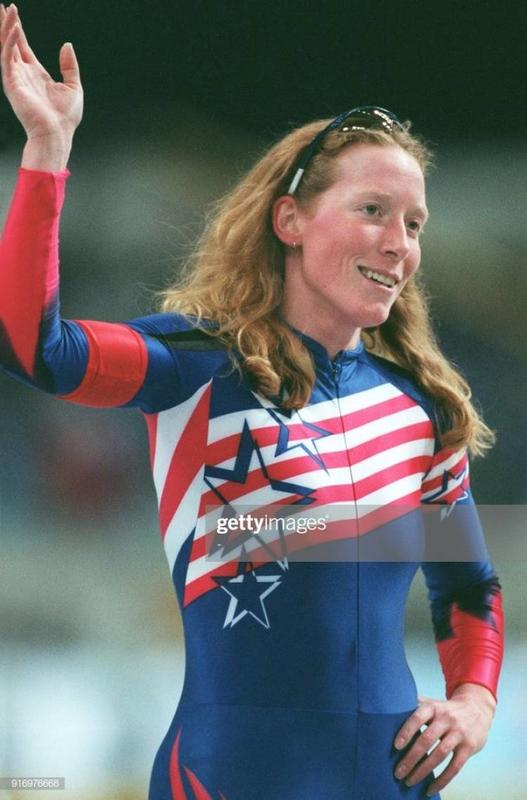
Witty has been openly gay for her whole life, never seeking publicity for the issue, but living for many years with her partner Frouke Oonk. It was her sport that led to her meeting her partner; Oonk has also represented her country at the highest level, having been a long track speed skater for the Netherlands.
Rosie Jones is the first entry on our list to come from the world of golf. She's a decorated and successful golfer; never quite winning a major but coming close on a number of occasions. She made more than $8m over the course of her career, which finally came to an end in 2003 after beginning in 1982. It was the following year that she came out to the public, but her sexuality had been known to family, friends and even some other players since the 1970s.
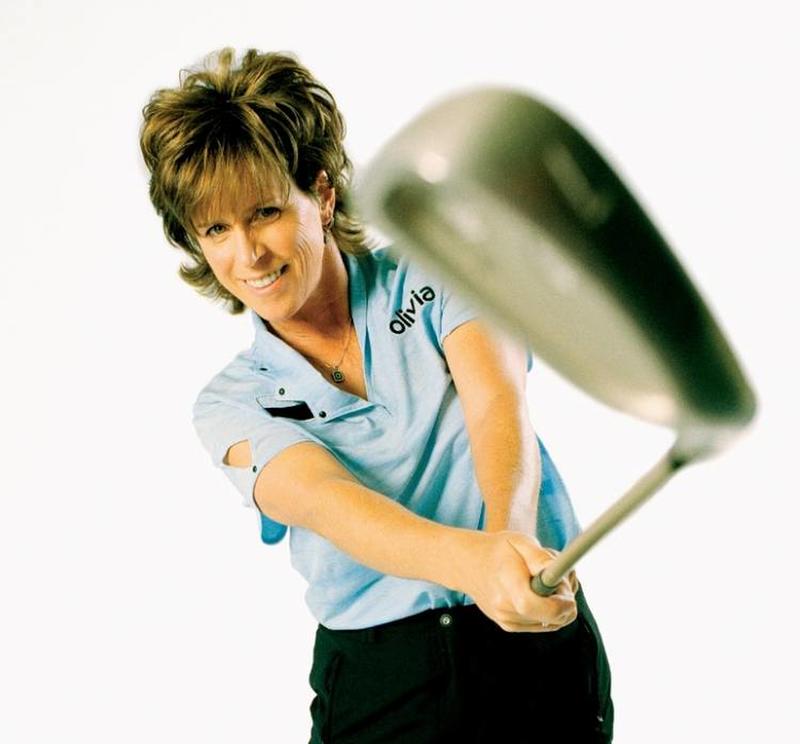
Jones timed her announcement to help give maximum publicity to Olivia, a travel agency for lesbians who became one of her sponsors. She's in her late 50s now but still has a lot of love for golf, taking part in Legends Tours and winning the Wendy's Charity Classic as recently as 2017.
In keeping with the idea that some sports seem to be more open to players coming out as gay, and women's sports in particular, here's another openly gay US soccer player. She retired in 2017 after a phenomenal career that saw her win an Olympic gold medal for her country, and also switch sports briefly to become part of the first-ever US women's rugby sevens team, which entered the Challenge Cup in Dubai in 2011.
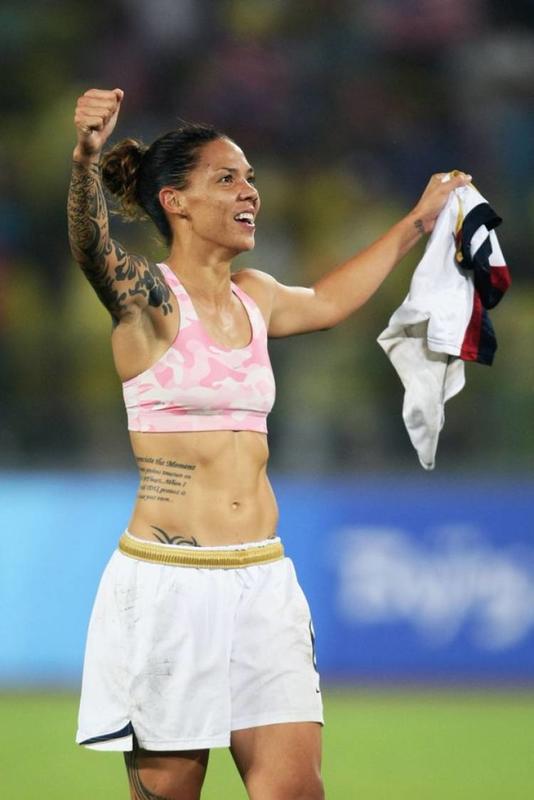
The heavily-tattooed Kai came out in 2008, just before she was confirmed to be in the team for the Olympics that year. She was one of only three openly gay athletes in the entire USA Olympic team for that year. A 'free spirit' by her own admission, Kai had a fall-out with the management of the US Soccer team in 2011. The details of the fallout were never disclosed, but she tweeted in 2011 that she would 'never play for the national team again,' and declined to answer any further questions on the matter.
Daria Berenato is better known to WWE fans as Sonya Deville. Darren Young was the first openly gay male WWE wrestler a few years earlier, and now Deville is the company's first openly lesbian wrestler. Deville made her way into WWE via the 'Tough Enough' reality TV series. She didn't win the competition but impressed the company enough to be given a developmental contract and started training in 2015. After a few years in development, she made her first TV appearance on WWE's main roster in 2017.
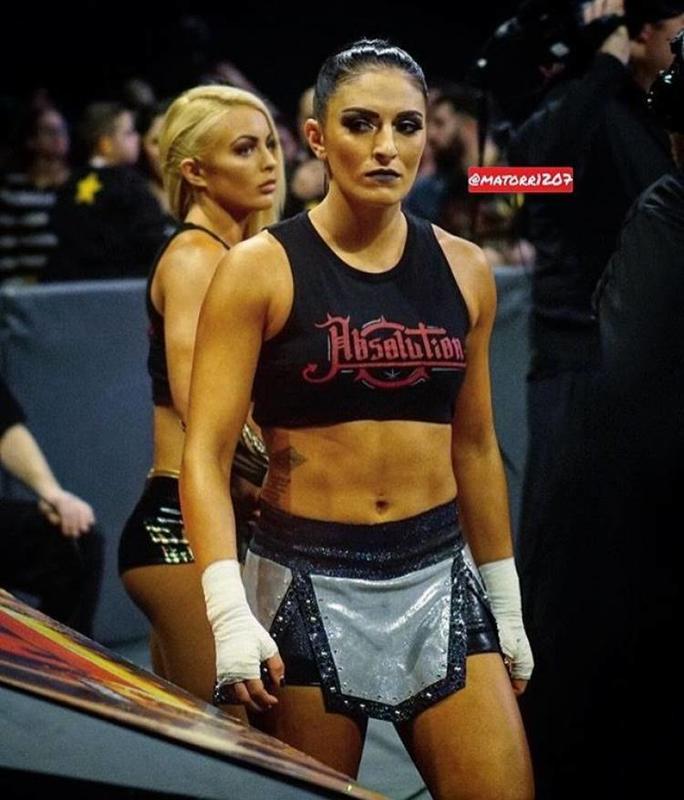
Deville (as Berenato) was first interested in MMA and cage fighting before joining WWE and was actively fighting before she was accepted as a contestant on 'Tough Enough.' Her professional record at the time she gave up was two wins and one defeat, with her loss coming by way of decision rather than a stoppage. She's currently dating former WWE trainee Zahra Schrieber, who was once the girlfriend of WWE superstar Seth Rollins.
The tale of Kwame Harris is a difficult one. He's another NFL player who chose to come out long after his career was over, and his sexuality hasn't always been in the spotlight for the right reasons. Harris played for the San Francisco 49ers between 2003 and 2007 before going on to play for the Oakland Raiders, and retiring in 2010. Although family and friends knew he was gay after his mother challenged him on the issue at a young age, he kept his orientation secret for the entirety of his playing career.

The world may never have found out he was gay at all were it not for his arrest on a domestic battery charge in 2013, when he assaulted his partner Dimitri Geier at a restaurant. Harris denied the charges but was convicted, serving five days in jail and being placed on probation for three years. Harris did an interview with CNN that year to confirm he was gay but has also said he doesn't intend to make any further comment about his private life.
Given the extensive levels of physical training, diet regimen and conditioning that bodybuilders are required to undertake, as well as the competitive element, we feel like it's appropriate to call bodybuilding a sport. By doing so, we're able to include the trailblazer Chris Dickerson (not to be confused with the baseball player of the same name) in this list.

Dickerson is an interesting man in many ways. As well as being a bodybuilder, he's also an accomplished opera singer. His career was full of firsts; he was the first African American Mr. America winner in the American Athletic Union's bodybuilding competition in 1968, and when he came out in the 1970s he became the first openly gay winner of the IFBB Mr. Olympia contest, although it took him until 1982 to claim the prize after a couple of second-place finishes. Although he's almost 80, he still trains to this day, and offers advice to younger bodybuilders who write to him.
Emile Griffith didn't agree with being labeled, and therefore never accepted that he was gay. That means that the first openly, self-confirmed gay man to out himself while still actively boxing is Puerto Rico's Orlando Cruz. The former World Lightweight Champion came out in 2012 and continues boxing to this day, although at 37 he's approaching the end of his career.
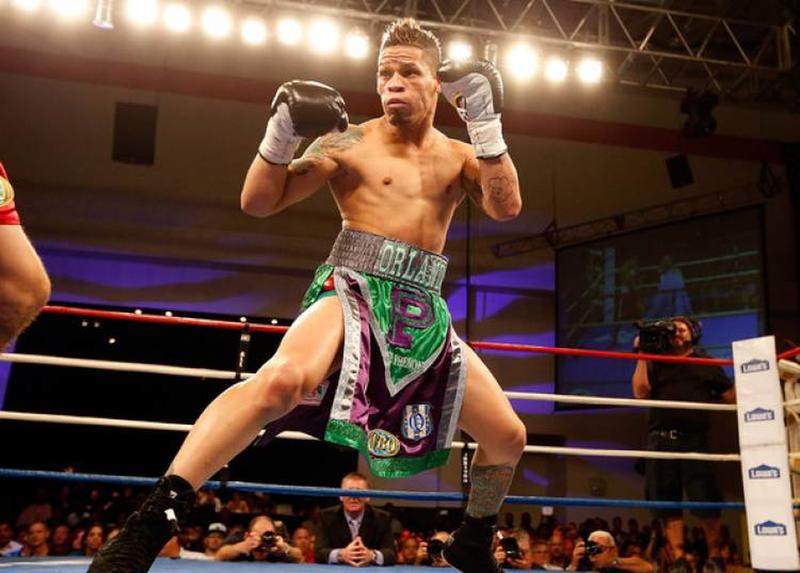
Cruz was defiant in the statement he made when he come out; he said 'I have and always will be a proud Puerto Rican. I have always been and always will be a proud gay man'. If coming out had an effect on him, he didn't show it; he won his next match in October 2012 by unanimous decision. When the National Gay and Lesbian Sports Hall of Fame opened in 2013, Cruz was inducted as one of the inaugural members.
Working up to the level we're now at in terms of gay rights has been a long road, and it needed pioneers. The third ever Gay Games was held in 1990 as an opportunity for gay people to show that they were just as able to compete in sports as their heterosexual peers (nearly thirty years later it seems crazy to think that was ever a question), and they got some heavy backing in the form of Olympic swimmer and gold medalist Bruce Hayes. Hayes had retired from swimming in 1984 but felt that by coming out and competing in the 1990 tournament, he was helping to legitimize it.

Hayes enjoyed the experience so much that he competed in the games on two further occasions, and then got involved in organizing the tournaments after he finally retired for good; although he was tempted back to compete one more time in a special over-40s event at the 2010 Gay Games in Cologne.
Female soccer stars don't come with a much higher profile than US legend Megan Rapinoe, who is still playing today at the age of 33 and may continue for a while yet. So far, she's represented her country over 140 times, and was ranked by FIFA as the second-best female player in the world in September 2015. She came out as gay in 2012, and so has been openly gay for the majority of her career. At one point she was dating fellow player Sarah Walsh, but more recently has been with Seattle Storm's Sue Bird. Together, Rapinoe and Bird became the first same-sex couple to appear on the cover of ESPN's 'Body Issue' in 2018.

Among the many sporting honors of Rapinoe's career, she was also one of the first female players to be included in the popular series of FIFA football video games, when women were included for the first time ever in 2016.
Being openly lesbian is thankfully no barrier to playing professional softball. If it were, the US team would have been deprived of the services of Lauren Lappin. She was part of the team that secured a silver medal for their country at the Summer Olympics in 2008. That was the peak of a career that had seen her play for the USA National Elite team in both 2003 and 205, and also go to the 2004 Olympics as a backup.

By 2009 she was looking at winding down her career and joined the Northwestern University team on a non-contract basis to work as a coach. That seemed to spark a fire in her, as she went back into the professional leagues with the USSSA Pride in 2010 and continued playing with the Pennsylvania Rebellion before finally calling it quits for good in 2015.
The problem with figure skating and ice dancing is that it doesn't really pay the bills unless you're exceptionally good at it, and even then, only at major competitions. Ryan O'Meara was exceptionally good at it, but even the major competitions and the Olympics weren't providing him with a sustainable income. He ultimately turned his hand to interior decorating and turned out to be very good at that too, so made a career out of it.
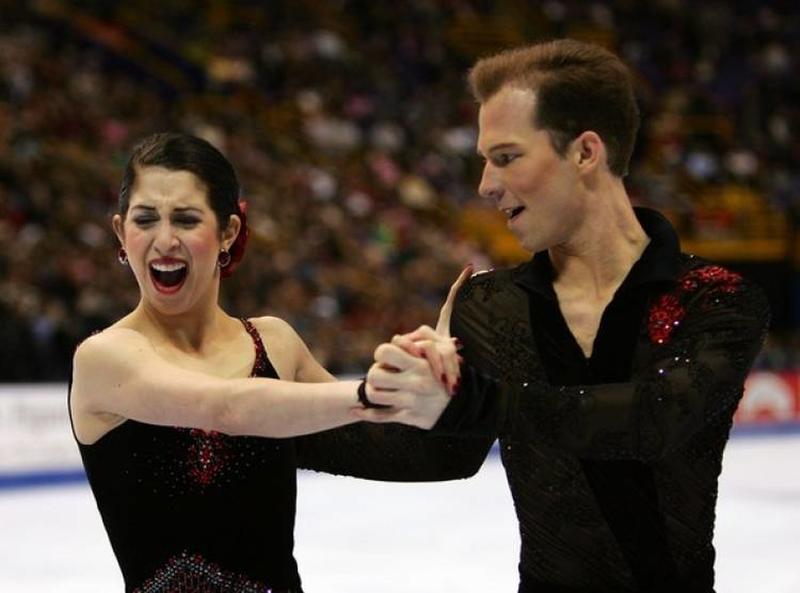
Openly-gay O'Meara competed at the Winter Olympics in 2016 with dancing partner Jamie Silverstein. The duo didn't take home a medal but did finish in 3rd place at the US Championships in 2005 and the same position at the Four Continents Championships the same year. In 2006 they announced their partnership was on hold as O'Meara took some time off; he ultimately decided not to return, focusing on his design company instead. He's named his business 'Palavela' after the arena which he danced at in the Olympics.
Female basketball players don't come much more accomplished than Brittney Griner. When she eventually retires, she'll be able to look back on a career which has brought her gold medals representing the USA at two World Championships and one Olympic Games, as well as a WNBA Championship and more individual awards than we can count. She belongs on the 'all-time great' list.
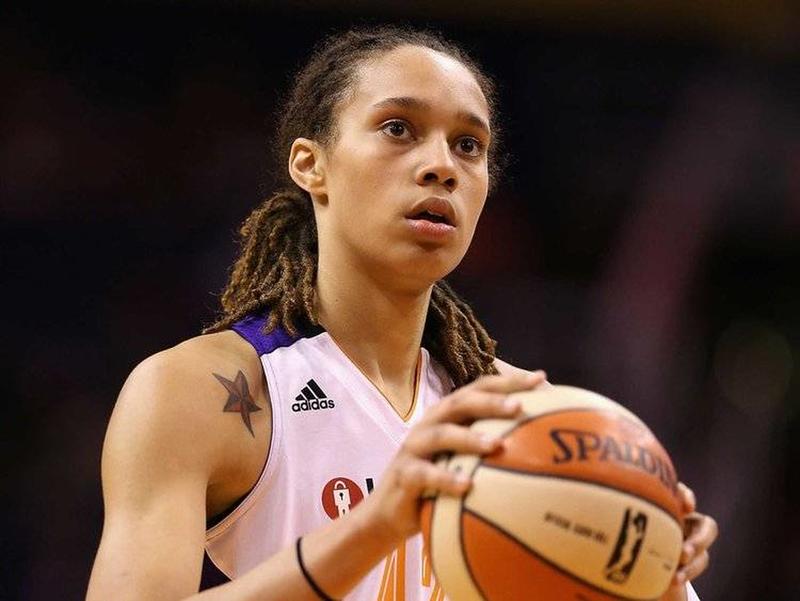
Griner came out as gay right at the start of her pro career; a decision which led to a schism with her father, meaning Griner had to live with one of her coaches for six months after being kicked out of home. When she secured an endorsement deal with Nike, it was the first time the sportswear giant had a sponsorship deal of any kind with an openly gay athlete. She devotes much of her time to LGBT anti-bullying causes, especially those which focus on children, as she was bullied for both her height and her sexuality when she was growing up.
Ronald Robertson was a figure skater who was ahead of his time. He represented the USA at the 1956 Winter Olympics, picking up the silver medal and making himself the youngest man ever to do so at the time. He was well known for his spinning ability and was an early adopter of many of the 'flair' moves we see on the rink today. Sadly, he retired from the sport the same year after he was accused of forging his expenses at the US Championships; a charge he denied.
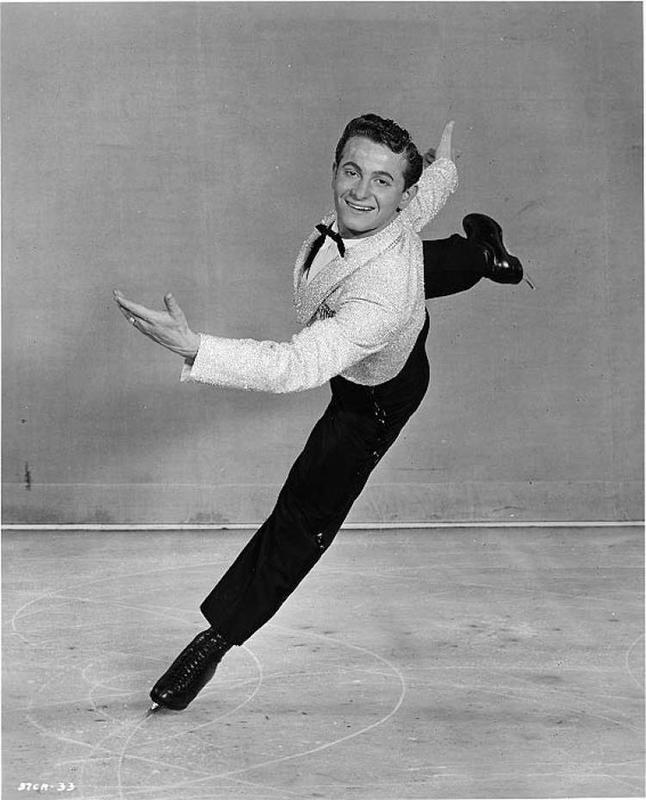
After retiring from competition went into ice dancing as performance, signing up with the Ice Capades for $100,000 at a time when that was still a fortune! He also entered into a long-term gay relationship with author Tab Hunter, although the details of their relationship weren't known until many years later. His final public appearance as a skater was at the 1965 New York Fair, where he was the feature attraction for the 'Ice Travaganza' spectacle.
Ronald Robertson was gay at the time he was skating, but his sexuality wasn't known until many years afterward. That left the door open for Rudy Galindo to become the first openly gay skating champion in the history of the United States when he won the National Championships in 1996. He'd actually won the award before in 1982 and was a decorated pairs skater with National Championship wins in 1989 and 1990.
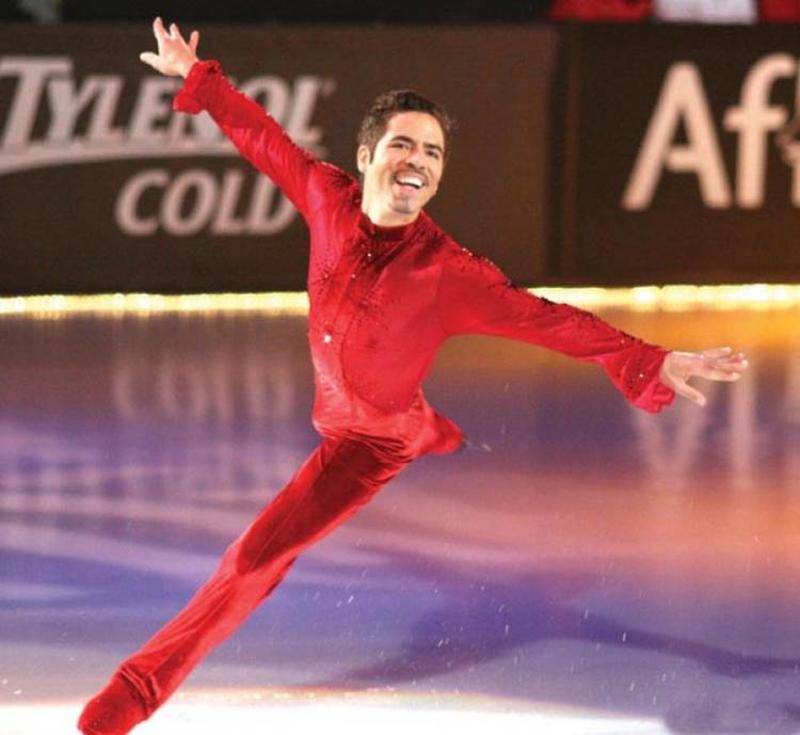
Galindo was at the end of his career when he decided to come out as gay, and didn't compete again after that 1996 championship win, opting to go out on a high at the age of 27. He's been living with HIV since 2000 but is healthy and happy with his life in San Jose, California. He's Californian by birth and returned there in 2006 after spending years in Reno, Nevada.
Lori Lindsey, known to both teammates and opponents as 'Lightning' is another woman who's represented the USA at the highest level while being openly gay. She came out in 2012 in an interview with Autostraddle magazine, but also noted that she'd never made any secret of her sexuality, and friends, teammates, and family had already known for a long time.
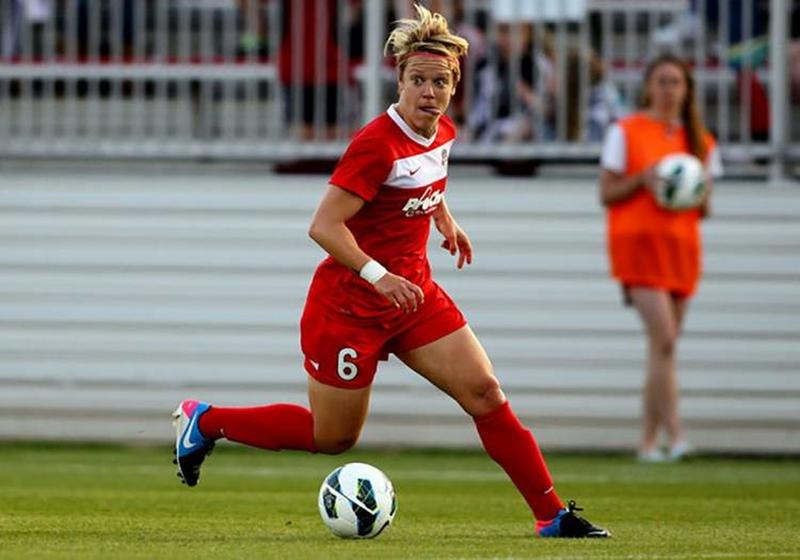
Lindsey was nominated for the US National Soccer Class Hall of Fame in 2018, having played for the national side at the 2011 FIFA World Cup in Germany. She spent most of her playing career in the US playing for Washington sides (both Washington Spirit and Washington Freedom) before moving to Australia to play out the last few years of her career, retiring in 2015. She can now be found coaching at the Washington Spirit Development Academy.
Billie Jean King opened the door for women in tennis to come out as gay and gave Ilana Kloss the confidence to come out herself. That turned out to be a bonus for King's bravery, as the two have now been together for decades! Kloss was an excellent tennis player in her own right, but was more active as a doubles player than she was in singles. Her career highlight was winning the US Open Doubles Tournament in 1976.
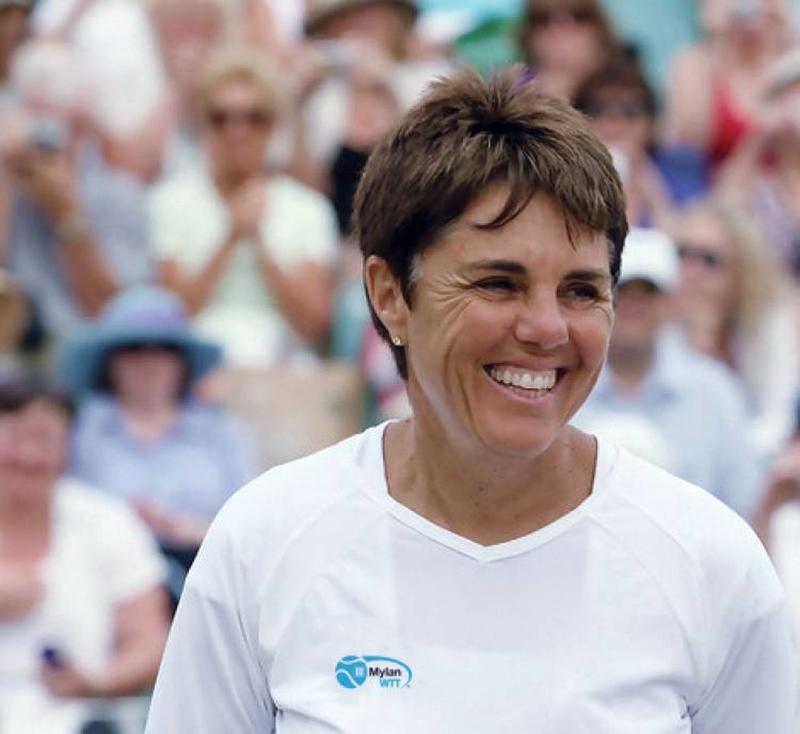
Since retiring, Kloss has stayed involved with the sport. She's been the commissioner of World Team Tennis since 2001, as well as coaching several players one on one, although she does less of that now she's in her 60s. In 2018, she and King branched out into a completely different sphere of sport; they made a joint investment and became minority owners of the LA Dodgers baseball team.
Patty Sheehan was the first LPGA player to come out as gay during her active career and has since gone on to become a role model for lesbian athletes and female golfers in general with her incredible career. She's won an incredible 35 LPGA tours including six majors and was elected into the World Golf Hall of Fame in 1993 when she was still in her 30s, and still playing! That was in recognition of her 1992 achievements, which included being the first woman to win both the British and US Opens in the same year.
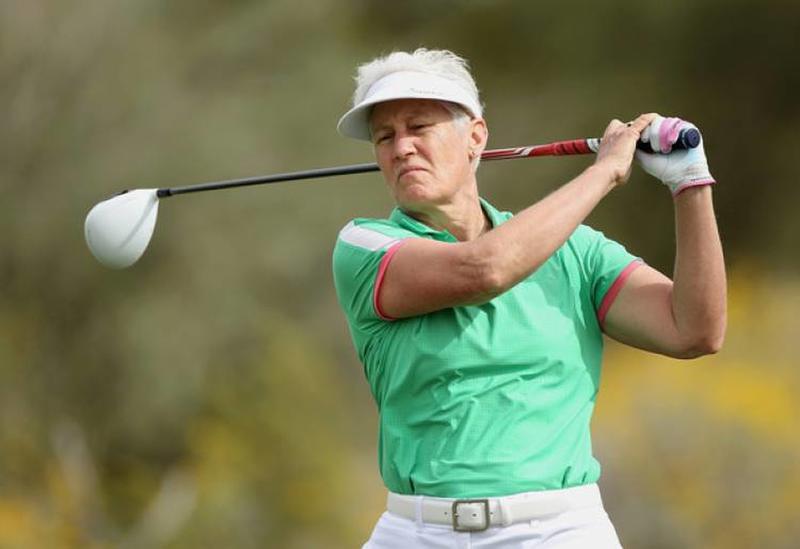
At the peak of her fame, Sheehan was a household name. She won the coveted Sports Illustrated Sportsperson of the Year Award in 1987, back when it was still called 'Sportsman of the Year' and women very rarely even came into consideration for it. She retired from regular competition in 1996, but continued playing in (and winning) legends tours until 2006. She has two adopted children with her partner Rebecca Gaston.
In every sport, there will only ever be one definitive first person to come out as gay. For Major League Baseball, that was Glenn Burke. Burke was a trailblazer in more ways than one; he also invented the high-five out on the field with teammate Dusty Baker in 1977! Burke was openly gay during his short baseball career; a deliberate choice that he made because he wanted to advance the cause of gay people in sports. Most of his LA Dodgers teammates accepted him, but it was believed that an element of homophobia was behind his trade to the Oakland Athletics in 1978.
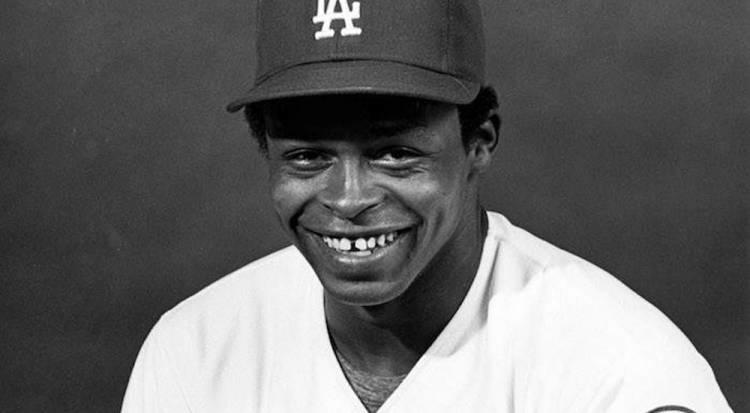
Burke was never welcomed by the Athletics, subjected to homophobic slurs by new coach Billy Martin in 1980, and he retired after suffering a knee injury before the 1980 season began. He passed away due to complications from AIDS in 1995, aged 42.
Billie Jean King was the first female tennis player ever to come out as gay, but she wasn't the first ever gay female tennis player. That - to the best of anyone's knowledge - was Helen Jacobs. Jacobs was an exceptional player during the 1930s, winning the US Open four times and Wimbledon once over the course of the decade.

She also lived a colorful life away from the court; during the Second World War (after the end of her tennis career) she was a commander in the U.S. Navy Intelligence, becoming one of five women who would achieve the rank. Although she never came out as gay - an admission of that kind from a woman would have been scandalous in the 1930s and 40s - she spent most of the 1930s in a relationship with wealthy American aristocrat Henrietta Bingham, who was the daughter the US Ambassador to Britain.
Add David Kopay to the list of gay NFL players who didn't feel able to come out during their sporting career. Kopay was a running back for several teams during his playing days, starting with the San Francisco 49ers in 1964 and finishing with the Green Bay Packers in 1972. He expected to be offered coaching positions after he retired from the sport, but his sexuality was becoming known and he feels like he was overlooked with that reason. He then chose to come out publicly in 1975.
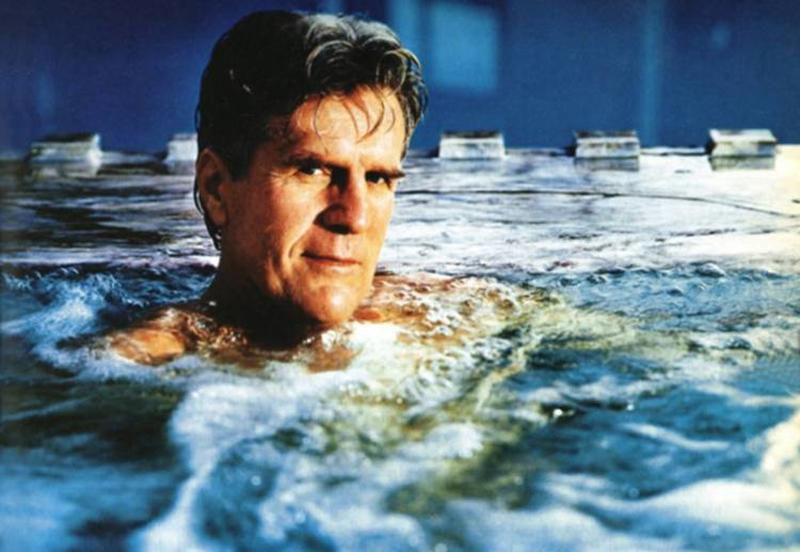
Embracing his role as an ambassador for gay people in sports, Kopay is on the board of the Gay and Lesbian Athletics Foundation, and is also associated with the Gay Games, for which he served as an announcer in 2006. He's also announced that when he passes away, he'll be leaving $1m as a donation to the Washington Q Center.
Jane Geddes, like Patty Sheehan and Rosie Jones, is an influential gay figure from the world of women's golf. She didn't quite manage to match Sheehan's level of success on the course, but she still managed to bag fifteen career LPGA tour wins, including two majors. Having become an inspiration to lesbian female athletes as a player, she's gone on to become just as much an inspiration in the boardroom after retirement.

First, she founded an e-commerce website called Planesia, and then sold it in 2001. She picked up a law degree, but instead of taking up a legal career she returned to golf in 2007 to become the Senior Director of Tournament Business Affairs. Geddes must have excelled in that role, because she then became Vice-President of Competition in 2009. That put her on the radar of wrestling giants WWE, who appointed her as VP of Talent Relations in 2011. She now lives in Stamford, Connecticut with her partner Gigi Fernandez and their twins.
Will Sheridan may be better known for his music career than his sport, but at one point he was a promising basketball player who seemed destined to make it to the NBA. The closest he got was the Villanova Wildcats Basketball Program, where he played between 2003 and 2007. His teammates always knew he was gay, as did all his friends and family, but he decided to keep it quiet for the sake of 'team unity.'
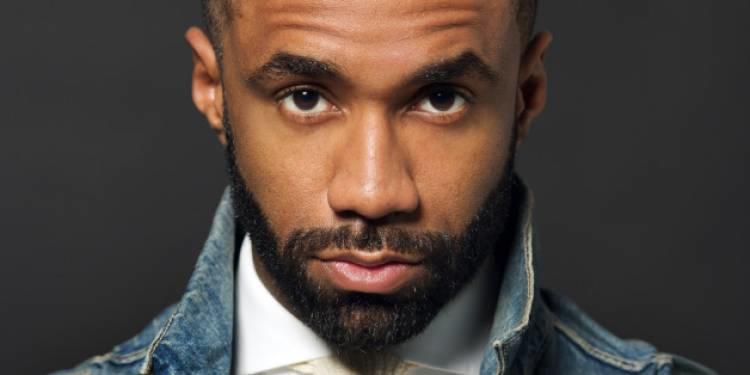
In 2011, Sheridan decided the time was right to announce it publicly, and so he confirmed his sexuality during an interview on ESPN. That led on to a second appearance on ESPN, this time on the 'Outside the Lines' show. Sheridan's sports career ended after a brief spell in the Italian Basketball League, which convinced him he was never going to make it as a top player. He retired at the age of 26 and moved onto music, where he's still active today.
A few years after David Kopay confirmed that he was gay, fellow former NFL player Roy Simmons found the courage to do the same. Simmons' time in the sport was sort; he played for the New York Giants from 1979 to 1982 and then spent one season with the Washington Redskins. Wrestling with his sexuality, Simmons developed a substance abuse problem. He managed to persevere, and appeared in the 1984 Super Bowl, but never played another professional game.
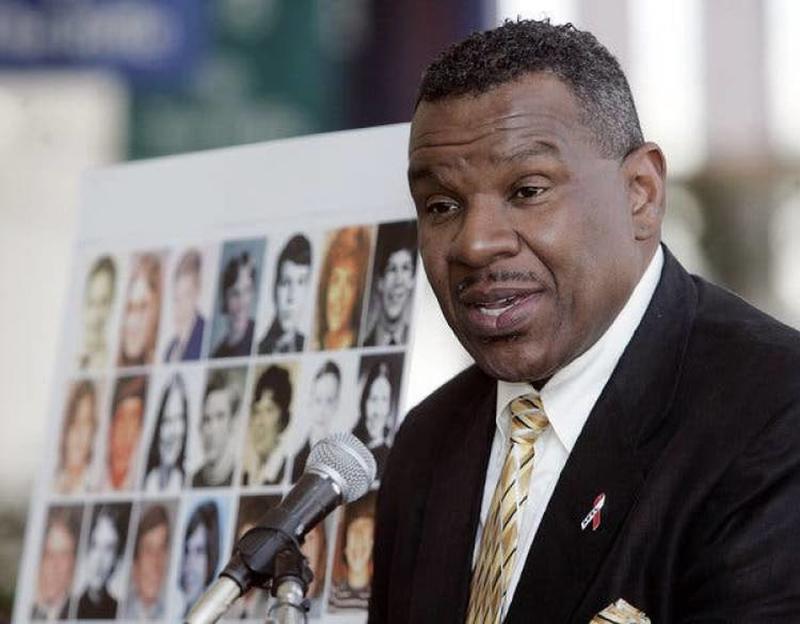
Simmons first confirmed that he was gay in 1992 in an appearance on the Phil Donahue show, putting an end to speculation after rumors about his sexuality had begun to circulate. By 1997 he had received the news that he was HIV positive, and he then led a quiet life in New York, passing away at home in his apartment in 2014 at the age of 57.
Latasha Byears played in the WNBA while being openly lesbian but is probably better known for controversy off the court than her career on it. She played for a number of professional teams including the Sacramento Monarchs, the Mystics, the Houston Comets, and Bulgarian side CSKA Sofia, but it was her time with the Los Angeles Sparks that made the headlines.

During 2003, Byears and three men were investigated with regard to the alleged rape of an unnamed WNBA player. Byears was fired by the Sparks three days after the allegation came to light. She was never formally charged with any crime. The same year, Kobe Bryant was charged with rape and settled out of court, but was supported by the LA Lakers. The same people owned both the Lakers and the Sparks, so Byears perceived a double standard and sued for discrimination. The case lasted two years, with the Lakers settling with Byears in 2005.
We've already seen that there have been several WNBA players who came out as gay during their careers, and Sue Wicks is another example. If she's to be believed though, there are plenty more who've never gone public with their sexuality. To quote Wicks directly, she said 'I can't say how many players are gay, but it would be easier to count the straight ones.'
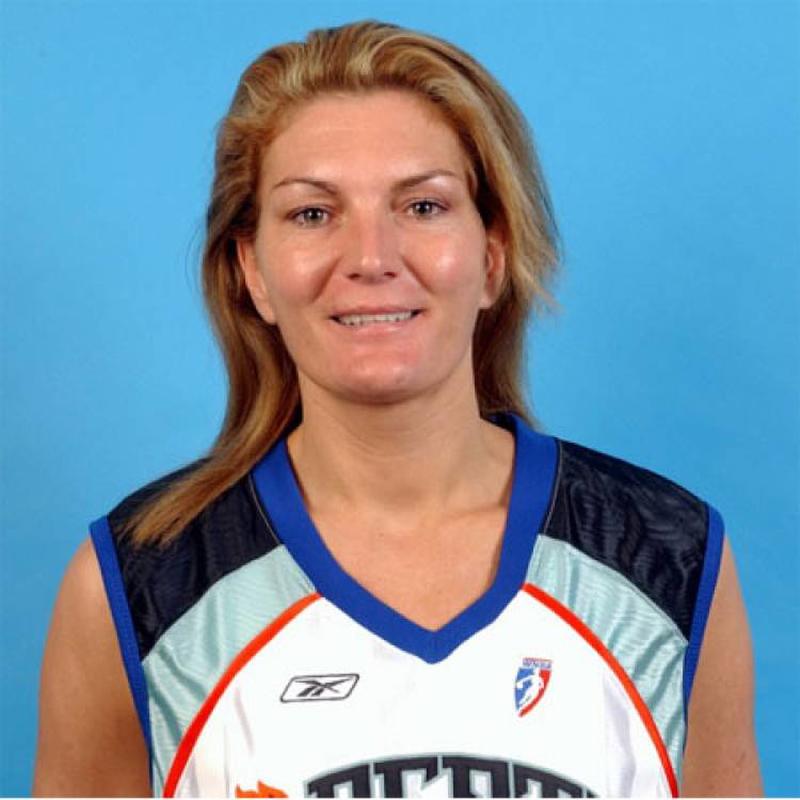
Wicks was a WBNA All-Star in 2000, and after retirement was inducted into the Women's Basketball Hall of Fame in 2013. She would have doubtless achieved more in the WBNA but had the misfortune to be at her peak before the league was formed; she spent most of her career playing in Japan, Spain, and Italy before joining New York Liberty for the inaugural WBNA season, staying there for five years before retiring in 2002.
Returning to the world of golf again, Sandra Haynie is another openly gay female golfer in a world that contains surprisingly few openly gay men. Haynie was only 18 when she turned professional, appearing on her first LPGA tour in 1961. A year later, she won her first LPGA Tour Championship before she turned 20. That was the first of 42 career wins, including four majors.
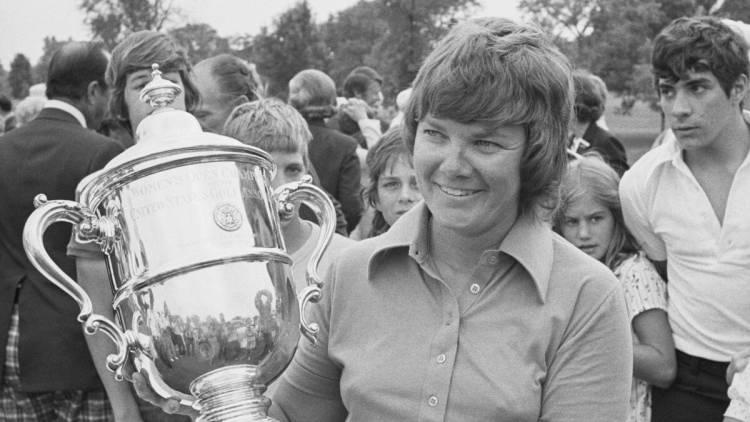
Haynie, who has never made any secret of her sexuality, played for an incredibly long time at the professional level. Her final season was in 1989, nearly thirty years after her debut. By that time, she'd already been a member of the World Golf Hall of Fame for over a decade; a major highlight that also included multiple LPGA Player of the Year awards during the 1970s. Even after retiring from playing, she represented the USA in the Handa Cup (a senior pro's tour) four times from 2006 to 2009, with the team winning the competition in each year.
Sue Wicks was probably correct to point out that there is an abundance of gay players in women's basketball, but there may be just as many - if not more - in women's football. Joanna Lohman is not only an openly gay player, but she also met her former long-term partner Lianne Sanderson while playing the sport, during the period both women played for Philadelphia Independence.
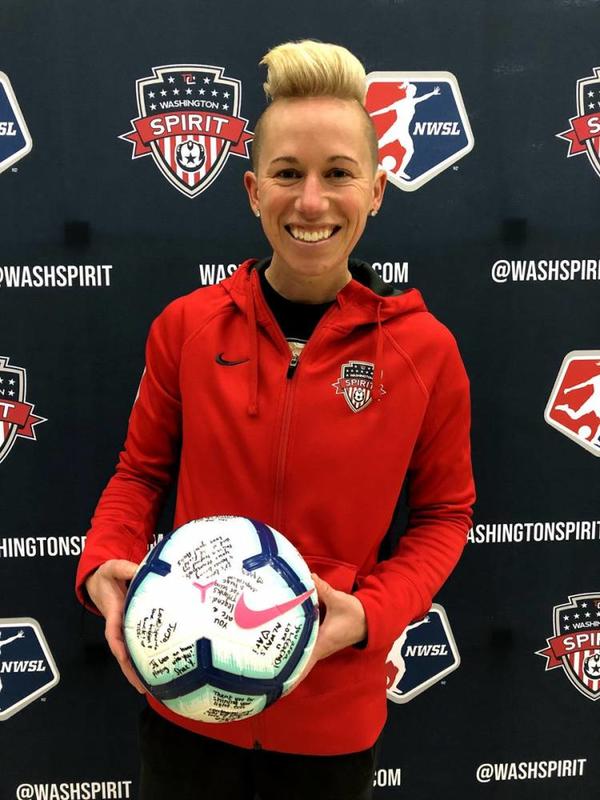
Lohman and Sanderson moved to Spain together, joining Espanyol, and opened a soccer school during their time there. The relationship wasn't to last, and Lohman's career has been a little nomadic ever since. She currently plays for Washington Spirit, but hasn't represented the US national team since 2007. She supports LGBT causes during her spare time, including the launch of GO! Athletes, which promotes the cause of ensuring safe spaces within schools for young LGBT sportspeople.
Professional wrestler Frederick Rosser, better known to fans of WWE as Darren Young, was the first openly gay member of the WWE roster. There have been other known gay wrestlers in the past, including WWE Hall of Fame member Pat Patterson, but nobody had publicly come out while actively wrestling for the company before. Young changed all that during an off-the-cuff interview with TMZ in 2013.
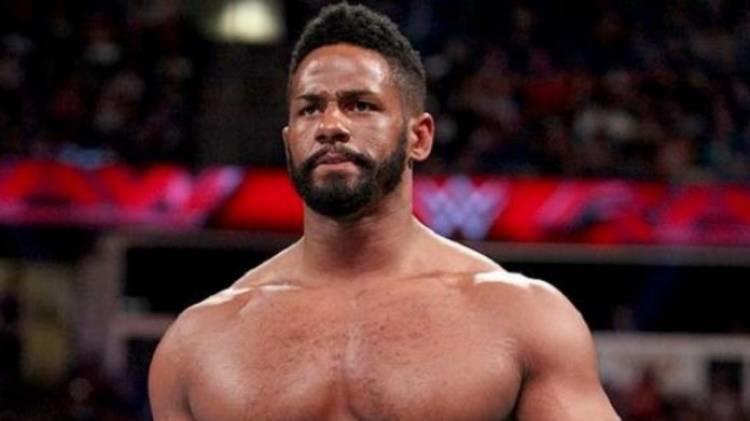
In a world where gay people had previously been portrayed with negative stereotypes, there was some concern about what the reaction would be, but the company and his fellow wrestlers were broadly supportive. Two years after Young came out, he and his 'Prime Time Players' tag team partner Titus O'Neill won the WWE Tag Team Championships. Young suffered a serious arm injury in January 2017 and was released from his contract in November of that year. He's yet to reappear with any major wrestling promotion.
British boxer Nicola Adams first made history when she became the first woman ever to win a gold medal as a boxer at the Olympic Games in 2012. She decided against turning pro and decided to seek more history instead, repeating the trick and winning Olympic gold again in 2016. The gold medals are the peak of a glittering amateur career which saw her win every amateur title she was eligible for.

Adams finally turned pro in 2017 and is currently undefeated, and the holder of the WBO Women's Flyweight Championship. She's been openly bisexual for her whole life, and in 2012 she was named as the most influential LGBT person in Britain by the Independent Newspaper. There is a plaque honoring her in her hometown of Leeds, England, and she was also appointed a Member of the Order of the British Empire in 2013 by the Queen, in recognition of her services to boxing.
Although we're seeing progress in most major sports in the world, we're still waiting for the first major male soccer player to come out during their playing career. The most high-profile player ever to come out is former German international star Thomas Hitzlsperger, who declared his sexuality in 2014, a year after his career was over. He had in the past been engaged to a female German model, and when coming out said he'd only realized he was gay in recent years.
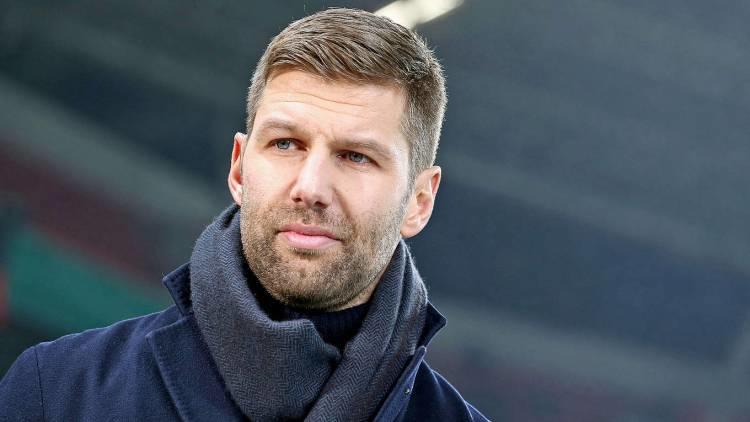
A player for Aston Villa, West Ham United, and Everton in the English Premier League, Hitzlsperger remains the only former player from that prestigious division ever to come out as gay, and arguably he's the most high-profile gay former player in the history of the sport. He represented Germany 52 times between 2004 and 2010, finishing third in the World Cup in 2006.
Rugby, like football, is a sport that appeals to 'alpha' males and tough guys. It's arguably an even harder and tougher sport than football because the players play without any padding. No current rugby union player came out until 2009, when Welsh international Gareth Thomas broke the taboo and came forward. He waited until towards the end of his career to make the admission, playing on for only one more season after coming out.
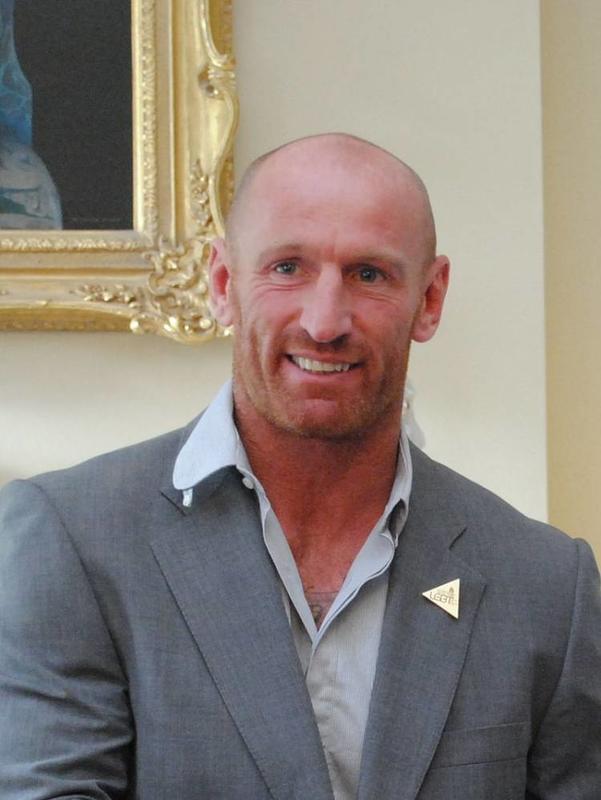
Thomas admits that he struggled with his sexuality, marrying his childhood sweetheart in order to fit in with what was expected of him, only divorcing her in 2009 directly before making his announcement. He's said that he doesn't want to be known as 'the gay rugby player,' and says his hope when making his declaration would be that other young gay players felt able to live openly. He's also thrown his support behind UK-based helplines for young people struggling with their sexuality.
Ian Thorpe has a strong claim to being the greatest professional swimmer of all time. He won five Olympic gold medals over the course of his career, and also picked up five individual medals at the 2000 Sydney Olympics, more than any other individual athlete at the games. The next year, he won six gold medals in a single World Championship tournament. His incredible speed in the pool won the Australian the nickname 'Thorpedo.'

Thorpe had to deal with constant speculation about his sexuality both during and after his swimming career, which ended in 2006. Eight years later, during an interview with Michael Parkinson on British television, Thorpe finally confirmed that he was gay and said he wished he'd come out sooner, stating that it felt better to get it out in the open, and that he hoped he could now be an example to young people who felt like they had to stay quiet. He's been in a relationship with model Ryan Channing since 2016, and the couple plan on one day having children.
Caitlin Cahow is a major achiever in the field of women's ice hockey. She's represented the USA at the Winter Olympics in both 2006 and 2010, as well as four different World Championships, winning three of them. Although she's still only 33, her professional career came to an end very early, having stopped playing at a professional level in 2011. The peak of her career was probably 2008, when she won the USA Hockey Women's Player of the Year award.

Cahow has been openly gay for her whole career and is another gay-and-proud athlete who made a statement at the 2014 Winter Olympics in Russia. She was specifically chosen by serving President Barack Obama to be part of the US delegation to those games. Since retiring from the sport, she's qualified as an attorney and now works for the international law company Jones Day in Chicago, where she lives.
It seems that professional tennis players feel a lot more confident about coming out than players of most sports; especially female tennis players, who were shown the way by Billie Jean King and Martina Navratilova a long time ago. Lisa Raymond is yet another example of a high-profile player who felt comfortable enough to say it. Raymond won four singles titles during her stellar career as a player, during which she amassed more than $10m in prize money and finished 4th at the 2012 London Olympics, finally retiring in 2015.

When asked about her decision to come out, Raymond was insightful. She said "I came out because there's life after tennis and being gay and playing tennis is not a big deal. There have been a lot of women in sports who have come out, and it's not seen as anything 'wow.'" The comments seem to imply that it may be easier for women in sport to come out than men.
In closing, we feel it's only right to pay tribute to the man who brought the Gay Games to the world; Tom Waddell. Waddell was a decathlete who represented the USA in the 1968 Olympics, playing 6th out of the 33 competitors. He would probably have gone on to achieve more in his track and field career, but a knee injury picked up during a high jump event in 1972 ended his career prematurely.
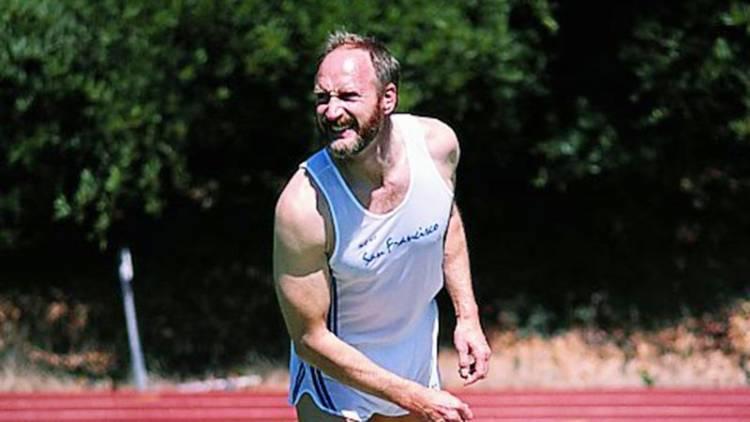
Returning to San Francisco after his retirement he entered a gay bowling league, which gave him the idea of creating a more extensive gay sports tournament. He tried to stage the first 'Gay Olympics' in 1982 in San Francisco but couldn't use the 'Olympic' part of the name after being sued, so it became the Gay Games. The tournament continues to this day, having last been held in Paris in 2018, but sadly Waddell would only see the first two tournament, passing away due to AIDS in 1987. His last words were "Well, this should be interesting."